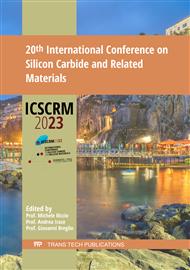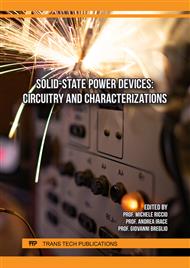p.9
p.17
p.23
p.29
p.37
p.45
p.51
p.59
p.67
Influence of Material Properties on Ruggedness Evaluation of Package Architectures for SiC Power Devices
Abstract:
Button shear tests at different temperatures between different mold compounds and Cu-leadframes have been performed to evaluate the adhesion of mold compounds to the inner surfaces of SiC-power devices. The results at different temperatures show the behavior of different material and layer stack combinations under storage at room temperatures as well as under operating conditions with elevated temperatures, where adhesion and thus the hermeticity of the device against moisture is significantly lowered. It has been shown that different thermomechanical properties of the mold compounds as well as the usage of different adhesion promoter materials have a significant effect on the adhesion properties of the mold compound to the leadframe surface of the SiC power devices, which have direct impact on the ruggedness and lifetime stability. Furthermore, these results have been correlated to thermomechanical simulations of the package architecture of SiC power devices under stress. Different wire bond architectures have been evaluated in simulations with and without die top delamination taken into account, showing that EMC delamination may play a major role in the lifetime stability of SiC power devices under thermomechanical stress like simulated in TCT- , IOL- and PTC-testing.
Info:
Periodical:
Pages:
37-44
Citation:
Online since:
August 2024
Authors:
Permissions:
Share:
Citation:



